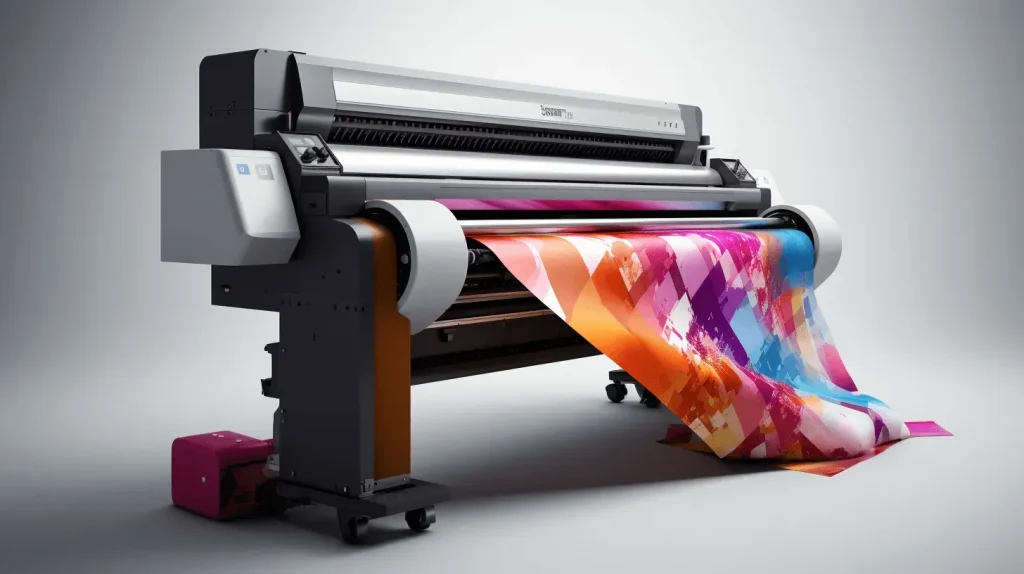DTF printing, or Direct-to-Film printing, has quickly become a game-changer in the realm of textile decoration. This cutting-edge technology revolutionizes how custom apparel is created, offering a simplified process compared to traditional methods like screen printing. One of the key DTF printing benefits is its ability to deliver vibrant, high-quality designs on a wide range of fabrics, making it an ideal choice for businesses looking to capitalize on current market trends in DTF. As we delve into the DTF printing process, we’ll uncover its versatility and efficiency, which position it as a leading option for personalized printing. Understanding this innovative technology is essential for anyone involved in the fashion and textile industries today.
Direct-to-Film technology, commonly referred to as DTF, has emerged as a pioneering approach in the custom printing landscape. This technique streamlines the printing process, allowing for intricate designs and bold colors on a variety of materials, from cotton to synthetic fibers. The DTF printing process is marked by its efficiency and adaptability, catering to the growing demand for personalized apparel. Not only does this method offer substantial printing benefits, but it also paves the way for businesses to stay ahead of the curve amidst evolving market trends in DTF. By harnessing the potential of this technology, companies can meet the varied and unique preferences of their customers.
The Rise of Direct-to-Film Printing in Custom Apparel
In recent years, Direct-to-Film (DTF) printing has gained significant attention in the world of custom apparel. This innovative printing technology caters to the growing demand for personalized garments, allowing brands to produce unique designs that resonate with consumers. The ability to print with high accuracy on a variety of fabrics makes DTF printing an appealing option for businesses looking to cater to a diverse clientele, from fashionistas seeking trendy looks to sports teams wanting personalized merchandise.
With traditional printing methods often limiting what can be achieved, DTF printing removes those barriers by enabling complex and colorful designs to be effortlessly transferred onto fabric. As e-commerce continues to thrive, brands that harness the power of DTF printing can create custom apparel quickly and efficiently, positioning themselves at the forefront of market trends.
Benefits of DTF Printing: Exploring Versatility and Efficiency
One of the primary benefits of DTF printing is its unmatched versatility. This technology allows businesses to print on an array of materials, from cotton and polyester to blends, accommodating varying customer preferences and fabric choices. Moreover, DTF printing excels in producing high-quality prints on dark garments without the need for a white underbase, thus maximizing design possibilities and reducing operational costs.
Efficient production processes set DTF apart from traditional methods like screen printing or Direct-to-Garment. With lower start-up costs and reduced time spent per print, entrepreneurs can deliver custom apparel at competitive prices. These advantages enable businesses to respond swiftly to market demands, ensuring they stay relevant as consumer preferences evolve.
An In-Depth Look at the DTF Printing Process
The Direct-to-Film printing process is essential to understanding how this technology works. It begins with design preparation, where graphics are created using specialized software to ensure they meet specific printing requirements. Next, the design is printed onto a unique transfer film using pigment-rich water-based inks, which contribute to the overall vibrancy and longevity of the design.
Following the printing phase, the application of adhesive powder is crucial for bonding the design to the fabric. This powder is sprinkled over the wet ink and cured under heat, forming a robust bond that holds through numerous washes. The final step involves placing the film onto the garment and applying heat to transfer the design effectively, resulting in a high-quality finished product.
Current Market Trends Influencing DTF Printing
As we look at market trends in DTF printing, it’s evident that there is a growing consumer appetite for custom and personalized apparel. E-commerce platforms are increasingly offering tailored solutions that leverage DTF printing capabilities, allowing customers to express their individuality through fashion. This shift towards unique, one-of-a-kind garments signifies a promising future for DTF printing.
Additionally, the rise of direct-to-consumer brands places further emphasis on the need for quick turnaround times and cost-effective production methods. DTF printing aligns perfectly with these market trends by offering high-quality results at lower prices, pushing businesses to adopt this technology to stay competitive and relevant.
Challenges in Adopting DTF Printing Technology
Despite its numerous advantages, adopting DTF printing technology comes with certain challenges. Printer maintenance is paramount; regular upkeep is essential to ensure production runs smoothly and to avoid compromising print quality. Issues like ink clogging or misalignments can create setbacks that require immediate attention, impacting delivery timelines.
Another hurdle businesses face is ensuring the quality of the raw materials used in the printing process. The inks and films must meet high standards to produce vibrant colors and durable prints. Companies need to invest in sourcing quality materials and educating their staff on proper procedures to maximize the potential of DTF printing.
The Future Outlook of DTF Printing in Fashion and Textiles
Looking towards the future, DTF printing holds great promise for evolving within the textile industry. As technology continues to advance, we can expect to see more eco-friendly materials and inks being developed, leading to significantly reduced waste in manufacturing processes. This sustainable approach will resonate with environmentally conscious consumers and businesses alike, making DTF printing an even more appealing choice.
Additionally, advancements in digital printing technology are set to enhance the capabilities of DTF printers, making them more efficient and effective. This evolution could lead to increased automation in the production process, allowing businesses to scale operations without sacrificing quality. As DTF printing becomes more integrated into fashion production, it is likely to unlock new creative possibilities for designers and entrepreneurs.
Frequently Asked Questions
What is DTF printing and how does it differ from other printing methods?
DTF printing, or Direct-to-Film printing, is a revolutionary method of garment decoration that involves printing designs onto a special film, which is then heat transferred onto fabrics. Unlike traditional methods like screen printing or Direct-to-Garment (DTG) printing, DTF printing allows for vibrant colors and details without the need for a white underbase, making it suitable for a wide variety of fabrics. This technology combines high-quality output with versatility and cost-effectiveness.
What are the advantages of DTF printing for custom apparel?
DTF printing offers several advantages for custom apparel, including versatility in printing on various fabric types, high color accuracy even on dark garments, and cost-effectiveness for small to medium-sized businesses. These benefits enable companies to expand their product offerings while maintaining quality, leading to increased consumer satisfaction in the personalized fashion market.
Can you explain the DTF printing process step by step?
The DTF printing process consists of several key steps: 1. Design Preparation: Create designs using graphic software. 2. Printing the Transfer: Print the design onto a special film with water-based inks. 3. Applying Adhesive: Sprinkle adhesive powder onto the wet print and cure it under heat. 4. Heat Transfer: Place the film on the garment and apply heat to transfer the design effectively. This multi-step process results in durable and vibrant printed textiles.
What are the current market trends in DTF printing?
The DTF printing market is experiencing significant growth, driven by the increasing demand for customized apparel and personalized textiles among consumers. As e-commerce and direct-to-consumer brands rise, there is a stronger focus on unique products. Analysts predict ongoing expansion in this sector, with DTF printing standing out for its versatility and high-quality results, catering to consumer desires for personalized fashion.
What challenges do businesses face with DTF printing?
While DTF printing has numerous advantages, challenges include the need for regular printer maintenance to avoid production issues, the importance of high-quality inks and films to ensure vibrant results, and the necessity for proper staff training. Businesses must invest in these areas to maximize the efficiency and effectiveness of their DTF printing operations.
How does DTF printing contribute to sustainability in the textile industry?
DTF printing contributes to sustainability in the textile industry by enabling efficient production with less waste compared to traditional printing methods. Enhanced printer technologies focus on eco-friendly solutions and ink consumption, leading to reduced environmental impact. As the technology evolves, future advancements in DTF may further prioritize sustainable practices and materials, aligning with the growing demand for responsible fashion.
| Aspect | Details |
|---|---|
| What is DTF Printing? | A technology that prints designs on film for transfer onto fabrics using heat and adhesive. |
| Key Advantages | 1. Versatility 2. High Color Accuracy 3. Cost-Effectiveness |
| Process Steps | 1. Design Preparation 2. Printing the Transfer 3. Applying Adhesive 4. Heat Transfer |
| Recent Developments | 1. Enhanced printer capabilities focusing on eco-friendliness. 2. Improved speed and efficiency for production. |
| Market Trends | – Growth in custom apparel demand driven by e-commerce and personal expression. |
| Challenges | – Printer maintenance – Quality control of inks and films – Need for staff training |
| Future Outlook | Increasing importance in textile and fashion industries with a focus on sustainability and efficiency. |
Summary
DTF printing is revolutionizing the method of fabric decoration, providing businesses with unparalleled versatility and vibrancy. This method allows for intricate designs to be applied effortlessly to various textiles, setting a new standard in the garment industry. As demand for personalized apparel continues to rise, understanding DTF printing’s advantages and addressing its challenges is essential for entrepreneurs seeking to capture market opportunities. The future of DTF printing looks promising, with advancements in technology paving the way for even more innovative solutions that benefit both producers and consumers.



